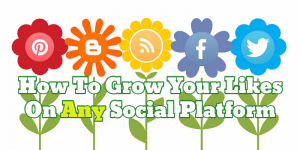The consumer journey doesn’t end at the point of purchase. Columnist Davor Sutija discusses how brands can extend the conversation beyond the moment of purchase to promote engagement and loyalty.

Unbeknownst to many, the shopping experience doesn’t begin with the purchase of an item. Rather, it begins when a consumer has a need or desire for a certain item. Successful brands may prevail at being part of the shopping experience up until they get buyers into stores and, ultimately, in line at the cash register. But many marketers assume — incorrectly — that their job ends once a purchase transaction takes place.
By not realizing the consumer journey continues long after the original point of purchase, marketers are missing an opportunity to build product affinity and customer loyalty. And as the trend of modern consumers continues toward placing a higher value on experiences over goods, this realization could become critical to a brand’s survival.
Brands’ and marketers’ mindsets must shift away from treating a purchase as a “final destination,” and instead focus on continuous interactions with consumers, even when those consumers leave the store for home or other locations. Today, there are tools available to drive engagement at each step of the customer journey — brands just need to identify how to effectively extend the conversation beyond a retail setting.
Tag along for the whole trip
Whether the destination is a brick-and-mortar store or an online website, many of today’s consumers expect shopping to be an experience. Even in our increasingly digital world, the concept of the consumer journey is alive, well and critically important.
This is because the shopping experience is driven by its primary component: a consumer’s intent to purchase — for example, the need to buy sunscreen in advance of a trip to the beach or a desire to find the right bottle of wine to pair with a special celebratory meal.
Alongside the intent to purchase is the moment of brand discovery. Given the ubiquity of smartphones today, this defining moment has become a more immediate and common part of the process. This is because, regardless of location, a consumer can instantly access information about a product, such as who makes it, where it can be bought and for how much. This is the setup for future customer interactions.
Once brand discovery occurs, consumers will determine the purchasing scenario that makes the most sense. Here, several technologies, including connected packaging featuring near field communication (NFC) labels, in-store Bluetooth beacons and interactive displays and kiosks, can help fuel brand-to-consumer engagement by turning a store visit into an experience.
Smartphone-wielding consumers are driving a major change in how products are purchased — not necessarily because they want an item faster, but because they want more from the product and the brand.
As I’ve previously discussed, millennial and Gen Z consumers seek personalized experiences. A meal out is oftentimes more about the experience than the meal itself — the location, mood and fellow diners all factor into the decision to dine at a particular restaurant. The same philosophy applies to the goods they purchase. Consumers want to try out the product, interact with it, or otherwise, have an experience that makes their shopping trip even more enjoyable.
The purchase is no longer the objective
Regardless of how much creativity goes into an in-store moment to make a shopping trip more enjoyable, an item’s purchase traditionally marks the end of the brand’s involvement in the consumer journey. Despite what a brand represents, there’s an instinct to treat the whole process like a transaction. Once the purchase has been made, you have what you need from a customer, and the conversation is complete.
But transaction-based thinking doesn’t fully value the rapport built during the brand discovery phase and undermines what brands are at their core. Strong and successful brands are built on relationships with consumers — pre- and post-purchase — that inform customers, educate and inspire them. If a brand’s interaction with the consumer ends at the point of purchase, it’s a substantial opportunity lost.
The 2017 Getting Serious About Omni-channel Experience study by Huawei, the Customer Experience Board, and the CMO Council, found 60 percent of surveyed marketers altered their content strategy by offering more content types and formats for potential buyers to consume. This is a step in the right direction, but it doesn’t go nearly far enough. According to the same study, only 38 percent of marketers have turned consumer engagement into a 24/7 opportunity to connect with customers, proving that creating the content without actively engaging consumers with that content is only half the job.
Going the distance
In essence, turning consumer engagement into an around-the-clock operation is synonymous with accompanying a buyer on each step of their shopping journey, as both embrace the idea of extending the dialogue well beyond the moment of purchase.
Major analyst firms such as Gartner also recognize the importance of this kind of brand-to-consumer engagement, citing its positive impact on customer retention. In fact, the Gartner 2017-2018 CMO Spend Survey found that CMOs are spending twice as much on customer retention as on customer acquisition.
As Gartner notes, marketers and brands will need to focus on capturing lifetime value or, simply put, keeping customers for life. Once brands know how to keep customers, they’ll also be able to better understand how to gain them.
The good news is, there’s never been a better opportunity to start engaging with consumers at home, particularly when smart or connected products enable access to custom video content or other unique digital experiences. For example, cosmetics packaging that unlocks access to online tutorials on how to apply the product or re-create a particular celebrity look can generate positive outcomes and deep customer loyalty.
The key to delivering this kind of content lies in the same item that made brand discovery a more lucrative part of the shopping process — the smartphone. Technologies that enable direct brand-to-consumer connections via smartphones, like NFC, increase the likelihood that the product will go home with the consumer.
As a bonus, technologies like NFC and augmented reality (AR) can work together to deliver compelling consumer experiences with a simple smartphone tap to a label.
Since consumers already treat shopping like it’s a journey, brands should be treating it the same way. The “final destination” no longer exists in the consumer shopping experience. A purchase transaction is just the start, and it can be the beginning of a conversation that fuels business growth, drives additional sales and creates ultra-loyal and satisfied customers.
Opinions expressed in this article are those of the guest author and not necessarily Marketing Land. Staff authors are listed here.
Marketing Land – Internet Marketing News, Strategies & Tips
(18)







